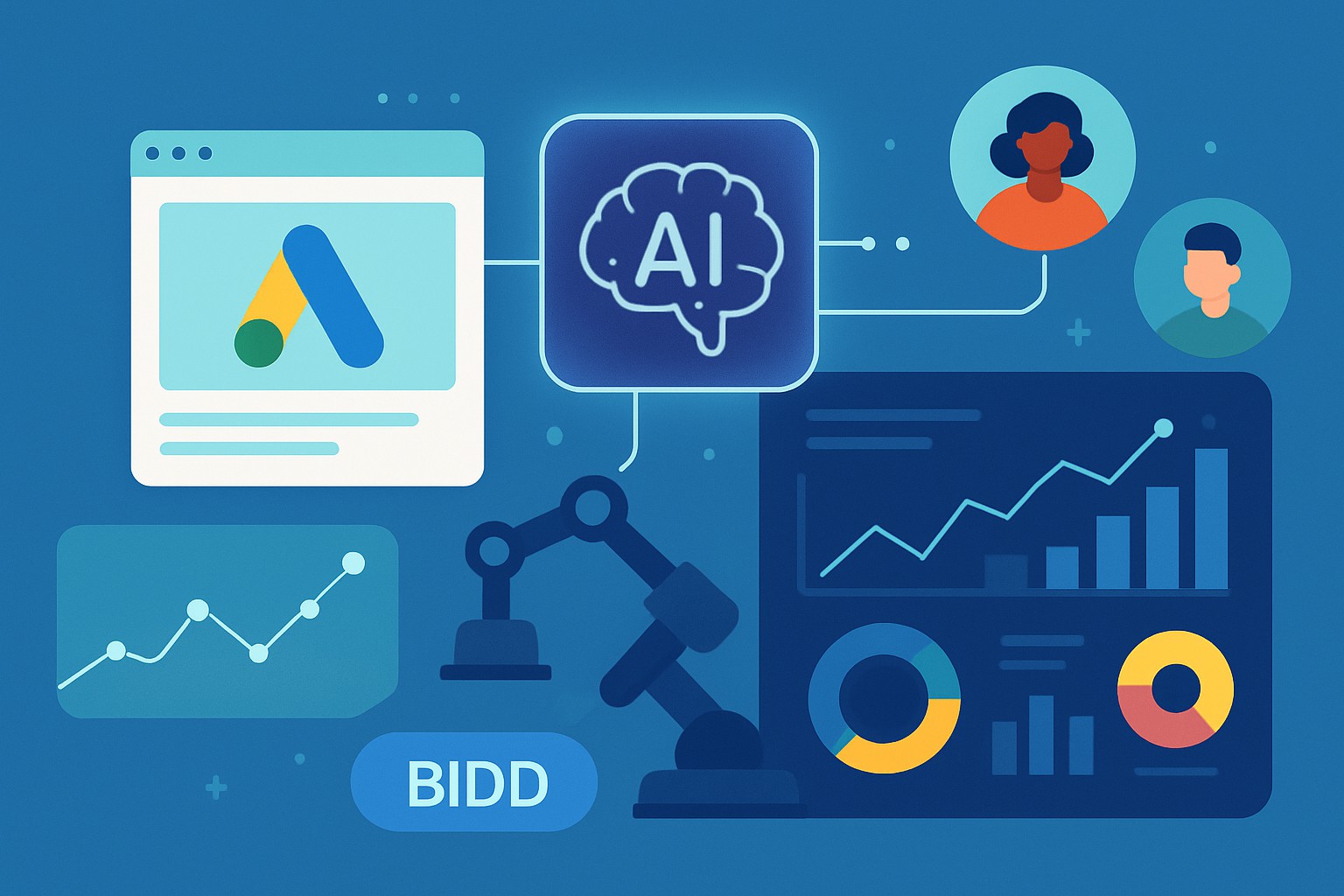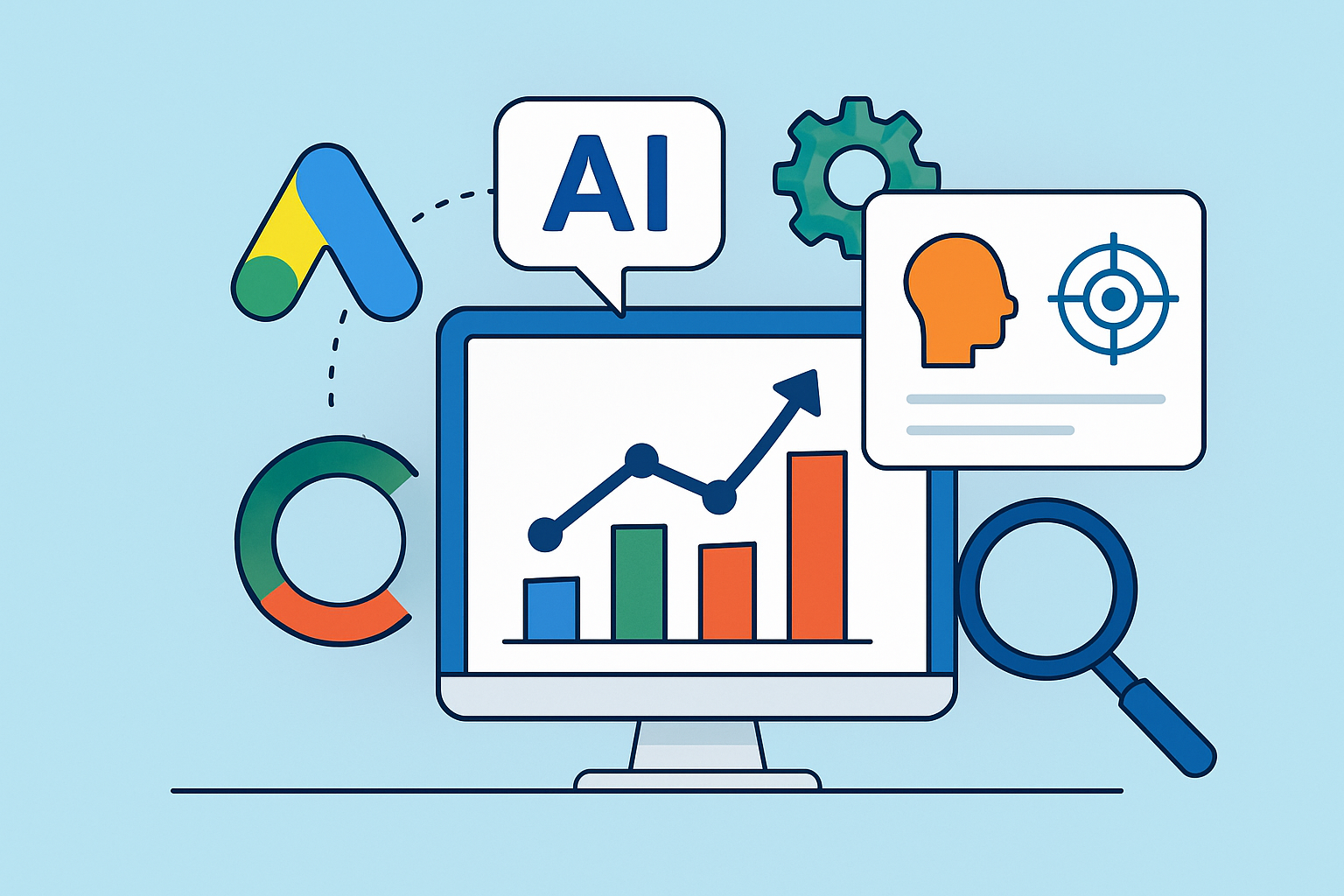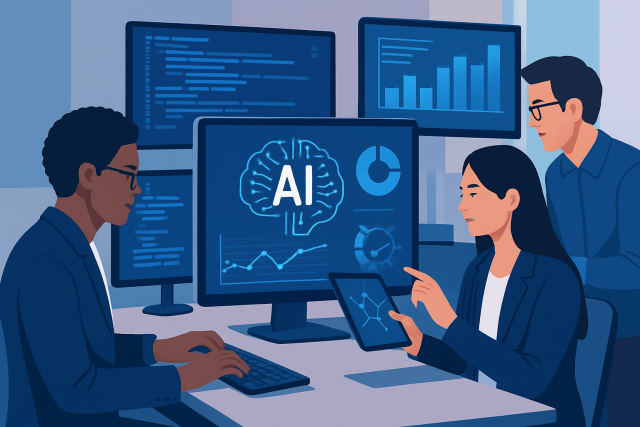How Google Using AI Changes Online Advertising

Google using AI in online advertising is quietly revolutionizing how marketers zero in on audiences and juggle budgets. It also helps make sense of campaign results. This clever approach helps businesses reach the right people more effectively, boosting ROI and enabling advertising decisions that adapt on the fly.
Google Ads relies on sophisticated AI algorithms to sharpen ad targeting and automate bidding. It fine-tunes campaigns by crunching data signals with machine learning. Google's platform tweaks strategies in real time to ramp up performance and deliver spot-on audience segmentation and wallet-friendly ad placements.
Taking a Closer Look at Google's AI Technologies in Online Advertising The Nitty-Gritty You Might Not Know
Google relies on a mix of AI tricks including machine learning models that understand user behavior, natural language processing to interpret search queries and ad content, and automation algorithms that adjust bidding and ad placements behind the scenes.
- Smart Bidding leverages machine learning to tweak your bids on the fly and boost your chances of scoring valuable conversions.
- Dynamic Search Ads work behind the scenes by scanning your website and automatically crafting ad content that feels relevant.
- Responsive Search Ads experiment with a variety of headlines and descriptions to figure out which combos hit the mark best.
- Audience Targeting taps into AI to cluster users based on what they do and what they are likely after to make your reach more precise.
- Ad Rank updates use AI to size up ads by looking at relevance, predicted click-through rates and how user-friendly the landing page is.
These AI elements team up smoothly to craft a system that pumps up ad relevance by zeroing in on the right customers at the right moment. Smart Bidding is your budget’s best friend and works hard to squeeze out every drop of value. Dynamic and Responsive Ads shift their messaging on the fly to match what users seem to be looking for. Audience Targeting gets precise and makes sure your ads land in front of the right eyes. The AI-powered Ad Rank algorithms play gatekeeper and push your ads into the spotlight where they belong.

Step-by-Step Guide on Google Using AI Features to Give Your Online Advertising a Serious Boost
Set clear, specific campaign goals that genuinely align with your business objectives—this is your North Star to help steer AI optimization in the right direction.
Opt for AI-powered campaign types like Smart Campaigns or Performance Max so you can really let automation do the heavy lifting.
Use automated bidding strategies such as Target CPA or Maximize Conversions to stretch your budget further and smarter.
Build Responsive Search Ads with a variety of headlines and descriptions, giving AI the playbook it needs to mix things up dynamically.
Target audiences using AI-generated insights to zero in on those precise customer segments that actually matter.
Keep a close watch on campaign performance and lean on AI’s real-time tweaks to nudge your results upward.
Regularly review reports and fine-tune your inputs based on AI’s suggestions and data analytics—it's the best way to keep improving without losing your mind.
Each step is designed to help marketers squeeze every bit of value out of Google's AI tools. Start by setting clear and realistic goals—this keeps your AI-driven decisions on track with what your business needs. Using Smart Campaigns and automated bidding can seriously lighten your workload but it is wise to keep those targets practical and manageable. Responsive Search Ads let AI tweak your messaging in real time and usually give user engagement a nice boost. Audience targeting is your secret weapon to make sure you’re reaching the right individuals instead of shouting into the void. Keep a close watch on the results, place some trust in the AI’s fine-tuning but also be ready to step in when the data waves a red flag.
Clever Tricks to Harness Google AI for Pumping Up Your Advertising ROI
- Always make sure to feed AI models with high-quality, spot-on data to help them learn better and boost accuracy. It really pays off in the long run.
- Keep a close eye on AI-generated suggestions and jump in regularly to fine-tune your campaigns because a little human touch goes a long way.
- Be picky when segmenting your audiences so AI can zero in even more precisely. Throwing spaghetti at the wall rarely works here.
- Keep your ad assets fresh and exciting by mixing things up with Responsive Search Ads and updating creatives. Stale ads are a quick way to lose attention.
- Think of automation as your trusty sidekick but never let it run the show solo. Human oversight is key to catch sneaky problems and steer the strategy right.
- Make it a habit to compare AI-generated ads against those crafted by hand. This doubles as a performance check and offers a treasure trove of insights.
When human intuition teams up with AI-driven data insights, it forms a powerful duo that keeps advertising on the up and up. While AI can crunch mountains of data in the blink of an eye, marketers bring the savvy strategic guidance that ensures campaigns don’t lose sight of the brand’s soul and stay tuned to the subtle market twists.
Common Challenges and How to Tackle Them When Using Google's AI in Advertising (Because Let’s Face It, It’s Not Always a Walk in the Park)
- Wrapping your head around how AI arrives at its decisions can be quite the challenge because of its complex data-driven magic behind the scenes.
- Facing the infamous 'black box' effect where results pop up without giving you the full scoop.
- Leaning too heavily on automation might put a ceiling on valuable human insights and the chance for hands-on tweaks.
- Running into ad disapprovals because AI-generated content clashes with policy enforcement filters.
- Trying to decode subtle AI performance metrics can feel like cracking a secret code and makes optimization a tricky puzzle to solve.
Marketers really need to get a good grasp of how AI works and stay hands-on throughout the process. Keeping a close eye on campaign data—checking in regularly—goes a long way in keeping things on track. And when ad disapprovals pop up, it’s best to nip them in the bud quickly to maintain a healthy account.
The most effective online advertisers tend to blend AI’s lightning-fast data crunching with a healthy dose of human creativity and good old-fashioned judgment to truly squeeze the best results out of their campaigns.
Measuring the Impact with Key Metrics for Google AI in Advertising
Key performance indicators like conversion rates and cost per acquisition are the bread and butter when it comes to gauging how well AI-driven advertising campaigns are performing.
| Metric | What It Measures | Why It Matters | How AI Influences It |
|---|---|---|---|
| Conversion Rate | The share of clicks that actually lead to the desired action | Gives you a clear snapshot of how well a campaign is pulling its weight | AI zeroes in on users most likely to convert, quietly boosting this number behind the scenes |
| Cost Per Acquisition | The average spend to snag one conversion | Helps you figure out if your budget is going the distance | Smart Bidding fine-tunes your spending habits, aiming to drive down CPA without breaking a sweat |
| Impression Share | The slice of total available impressions your ads snag | Shows the reach and presence your campaign commands | AI nimbly adjusts bids and placements to scoop up more impression share |
| Quality Score | Measures how relevant your ad is, along with click rates and landing page quality | Plays a big role in where your ad ranks and how much you pay | AI steps in to boost relevance and engagement metrics, making your ads work smarter |
| Click-Through Rate | The percentage of eyeballs on your ads that actually click | Tells you how tempting your ads really are | Responsive Ads combined with pinpoint targeting help nudge this number upward over time |
When google using ai for campaigns like mentioned on Arc Ergo, setting realistic benchmarks first is a smart move—it helps you keep a tighter grip on tracking growth without getting lost in the weeds. It’s way more useful to watch the trends over time instead of zeroing in on single results, which can be pretty misleading.





